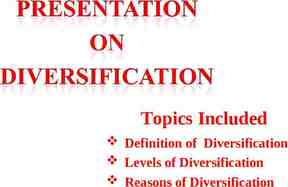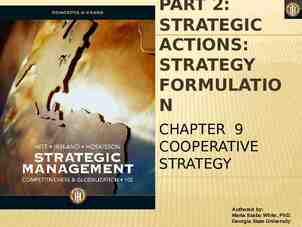BSA Rifle Merit Badge NO LIVE AMMUNITION in the classroom NO
77 Slides4.99 MB

BSA Rifle Merit Badge NO LIVE AMMUNITION in the classroom NO EXCEPTIONS! 1

NRA Gun Safety Rules ALWAYS keep your gun pointed in a safe direction ALWAYS keep your finger off the trigger until ready to shoot ALWAYS keep your gun unloaded until ready to use 2

NRA Gun Safety Rules ALWAYS keep your gun pointed in a safe direction 3

NRA Gun Safety Rules ALWAYS keep your finger off the trigger until ready to shoot 4

NRA Gun Safety Rules ALWAYS keep your gun unloaded until ready to use 5

More Rules for Using a Gun Safely Make sure those around you are safe Know your target and what is beyond Know how to use your gun safely Be sure the gun is safe to operate Use Correct Ammunition for gun Wear Hearing and eye Protection 6

What are two major causes of firearm accidents? Handling Ignorance (a lack of knowledge) Ignorance of the rules of safe gun handling Ignorance of the proper and safe way to operate a rifle. Carelessness ( poor or improper attitude) Failure to apply the rule of safe gun handling Failure to observe proper procedures for safely operating a rifle I-17

General Range Safety Rules Know and obey all range rules. (Wait for each command to be given during each exercise.) Know where others are at all times. Shoot only at authorized targets. Stop shooting immediately if you think you may have experienced a malfunction.

BB Guns, Pellet Guns, and Air Soft BB, Pellet, and Air Soft Guns Even Air powered guns are not toys. Today’s air guns are technically sophisticated and precise instrument. Everything you do with a normal Rifle with safe gun handling, shooting stance, fundamentals of firing, hygiene, and etiquette—also applies to air guns. 9

Safe Gun Storage. How would you react if a friend visiting your home asked to see your or your family's firearm(s)? Ask your parent(s) Do not touch firearms without an adult present 10

Rifle Storage Store guns and ammunition so that they are not accessible to unauthorized persons. Store guns and ammunition separately. Store guns and ammunition in a cool, dry place. Soft Case Safe Hard Case

Personal Protection Gear (PPE) Ear Plugs/ Ear Muffs Safety Glasses Clothing Ball Hat 12

Hunting Laws in Nebraska Always check local laws Must Take Hunter’s Ed if Under 29 Ignorance is no excuse http://outdoornebraska.gov/guides/ 13

Hunting and Wise use of renewable Wildlife Carrying Capacity Population of animals that an area support without being damaged 14

Shooting Sports Local Shooting Leagues BSA Adventure Crews Project Appleseed Game and Parks Leagues and Events Cowboy Action NRA Marksmanship 15

Hygiene Wash hands after shooting Use cold water Special lead soap if available Wash hands after cleaning guns or handling Do not eat or drink while shooting or handling firearms 16

Where to get more Information Books Instructors NRA website and other websites Firearms Dealers Range Safety Officers 17

NRA Gun Safety Rules ALWAYS keep your gun pointed in a safe direction ALWAYS keep your finger off the trigger until ready to shoot ALWAYS keep your gun unloaded until ready to use 18

Three Main Parts of Rifle A Rifle ACTION (Group of Moving Parts Used to Load, Fire and Unload A Rifle) BARREL STOCK I-7

20

Common Rifle Action Type Most Common Bolt-Action Semi-Automatic Lever-Action Slide-Action Less Common Falling Block Rolling Block Hinge-Action 21

Rifle Action Parts Receiver Trigger Firing pin Sear Hammer Hammer spur Breech bolt or breech block Extractor 22

Rifle Action Group 23

Rifle Action Group 24

Rifling Land Rifling Groove Muzzle Bore/ Measure Caliber Parts of A Rifle Barrel 25

Lands and Grooves Rifling Spiraling Lands and Groove that Spin the Bullet as it Travels through the Bore. GROOVE LAND LAND GROOVE Caliber Measurement of Diameter of Barrel MM/CAL 6mm Remington .244 Remington 26

Rifle Parts Bolt Action Safety Comb Grip Chamber Bolt Rear Sight Barrel Front Sight Butt Trigger Toe Box Bolt Handle Magazine Forearm Muzzle Trigger Guard 27

NRA Gun Safety Rules ALWAYS keep your gun pointed in a safe direction ALWAYS keep your finger off the trigger until ready to shoot ALWAYS keep your gun unloaded until ready to use 28

Selecting a Rifle When considering purchasing a rifle: Consult knowledgeable shooters Research and, if possible, test-fire various makes and models Purchase the rifle from a reputable dealer

Selecting a Rifle Purpose / Use 30

Selecting a Gun Caliber 31

Selecting a Gun Action Semi-Auto Bolt Action Lever Action 32

Selecting a Gun Stock Fit 33

Selecting a Gun Sights Rifle Scope Iron Sights Red Dot Sight 34

NRA Gun Safety Rules ALWAYS keep your gun pointed in a safe direction ALWAYS keep your finger off the trigger until ready to shoot ALWAYS keep your gun unloaded until ready to use 35

Ammunition 36

Primers PP RRIIM ME ERR Rimfire Centerfire Priming compound is shown in green. 37

Cartridge Firing Sequenceequence

3 Types of Malfunctions Misfire Hang Fire Squib Load 39

Misfire A Misfire is the failure of a cartridge to ignite when the primer or case rim has been struck by the firing pin. This situation may be caused by a defect in the cartridge or by a defect in the rifle that causes a weak firing pin hit. 40

Hang Fire A Hang fire is a perceptible delay in the ignition of a cartridge after the primer or case rim has been struck by the firing pin. This delay may last several seconds. 41

Squib Load A Squib Load occurs when the cartridge develops less than normal pressure or velocity after the ignition of a cartridge. Squib loads can cause a bullet to fail to exit the muzzle and become lodged in the bore 42

Cartridge Malfunction What do you do if you experience a: Misfire ? Hang fire? Squib Load? 1. Stop firing IMMEDIATELY 2. Maintain your hold on the firearm with your shooting hand keeping the firearm pointed down range. 3. Raise your non-shooting hand in the air 4. Wait for an instructor. 5. Do nothing else until your instructor arrives. 43

NRA Gun Safety Rules ALWAYS keep your gun pointed in a safe direction ALWAYS keep your finger off the trigger until ready to shoot ALWAYS keep your gun unloaded until ready to use 44

Shooting Fundamentals Determining the Dominant Eye Extend arms forward and form opening between the hands With both eyes open, look at a distant object through opening Bring hands to face while looking at object – Opening will be aligned with the dominant eye 45

Position A Position is the platform from which all the shooting fundamentals are executed. A Position should be comfortable, balanced, relaxed and properly aligned with the target.

Bench Rest Position Sit behind the bench facing the target Both elbows rest on the bench The firing hand grasps the stock wrist or pistol grip The head is erect The butt of the stock is positioned against the shoulder so that the Rifle sights are at eye level.

Assuming the Bench Rest Position Take a seat at the bench facing the target. Grasp rifle at the wrist or pistol grip with the firing hand, and positions elbows on the bench. Lay the rifle across the support and rest this hand on the sandbag or other support. Position the rifle against the face and shoulder so that the dominant eye can look through the sights comfortably and naturally.

Prone Supported Position Feet and legs are flat on the ground with the legs relaxed. Butt of the rifle in the shoulder close to neck. Elbows on the ground to support the rifle. Support hand under the Forearm. Trigger hand. Face firmly against the stock with eye looking straight down the sights. Align the position to target. 49

NRA Gun Safety Rules ALWAYS keep your gun pointed in a safe direction ALWAYS keep your finger off the trigger until ready to shoot ALWAYS keep your gun unloaded until ready to use 50

Rifle Shooting Fundamentals AIMING (sight alignment & sight picture) BREATH CONTROL HOLD CONTROL TRIGGER CONTROL FOLLOW-THROUGH 51

1. Aiming Aiming consists of two stages: sight alignment and sight picture. Sight Alignment refers to the proper positioning of the shooting eye, the rear sight, and the front sight in relation to each other.

Sight Alignment Sight alignment refers to the proper relationship of the front and rear sights. Front Sight Rear Sight With post-and-notch sights: The tops of the front and rear sights are even The front post is centered in the rear notch

Sight Alignment 54

Sight Picture Proper sight picture is obtained when the aligned sights are put into their proper relationship with the target. SIX O’CLOCK HOLD CENTER HOLD Focus Should Be On The FRONT Sight.

FUNDAMENTALS “Aiming” Scope FOCUS ON THE TARGET Sight Looking through the scope , Alignment You see the whole scope tube (not just small hole in tube) Sight Picture Cross Hairs are centered on the target

Scope Problems Eye too close or too far Eye not Centered 57

FUNDAMENTALS “Aiming” Aperture Rear and Post Front Sight FRONT SIGHT IS IN SHARP FOCUS Sight Alignment Aperture Rear and Post Front Sight The tops of the front is center in the rear sights aperture Sight Picture 6 O'clock Hold on the Bullseye

2. Hold Control Exercising Hold Control allows the shooter to maintain the proper sight picture and sight alignment during the process of firing the shot. An important factor in hold control is the way in which the rifle is gripped.

2. Hold Control It is hard to hold a rifle without some motion; this is called the “arc of movement.” One should try to maintain proper sight alignment and sight picture while minimizing the arch of movement. With practice, the arch of movement will decrease.

3. Breath Control The body moves when breathing. Use breath control to minimize such movement. Pause breathing momentarily while firing the shot! (Respiratory pause) 61

Shooting Fundamentals Trigger Control Trigger control refers to the proper method of activating the trigger to minimize movement that can misalign the sights. Trigger is pulled straight to the rear in a smooth, continuous manner without disturbing the sight alignment. Gradually and evenly increasing pressure until the mechanism releases. SURPRISE yourself when the gun fires. Hold Trigger back until bullet hits paper Slowly release Trigger 62

5. Follow-Through In Rifle Shooting: Follow-through means to maintain aiming (perfect sight alignment and acceptable sight picture), breath control, hold control, and trigger control until the gun settles back into the aiming area after firing. 63

Shooting Fundamentals The Fundamentals A Review 1. “Maintaining perfect sight alignment and acceptable sight picture.” – AIMING 2. “Pause breathing.” –BREATH CONTROL 3. “Holding still.” – HOLD CONTROL 4. “Moving only your trigger finger.” – TRIGGER CONTROL 5. “To maintain position, and continue aiming, breath control, hold control, and trigger control until the gun settles back into the aiming area after the shot is fired.” – FOLLOW-THROUGH 64

Most Important Shooting Fundamentals The two most important fundamentals are: Aiming Trigger Control

NRA Gun Safety Rules ALWAYS keep your gun pointed in a safe direction ALWAYS keep your finger off the trigger until ready to shoot ALWAYS keep your gun unloaded until ready to use 66

Inches, Minutes, and Clicks 67

20” Inches, Minutes, Clicks 16” 12” 4 MOA 8” 4” 2” 1” Yards 25 50 1” 100 2” 200 4” 3” 5” 1 MOA 400 300 500 1.5” Distance (Yards) 25 50 100 Windage Elevation (MOA) (MOA) 6 8 3 4 1.5 2 2.0” 2.0” 2.0” Distance (Yards) 25 50 100 200 400 Group Size (MOA) 8 4 2 1 0.5

Adjusting the Sights Shoot a group of 3-5 Shots. Move the rear sight in the same direction you want the hits on the target to move. Follow F.O.R.S. or instructions on Scope Guns MUST BE UNLOADED before making sight adjustments.

NRA Gun Safety Rules ALWAYS keep your gun pointed in a safe direction ALWAYS keep your finger off the trigger until ready to shoot ALWAYS keep your gun unloaded until ready to use 70

Caring for the Rifle It is important that you take proper care of the rifle through preventive maintenance. The rifle should be cleaned and lubricated at the end of each shooting session. The rifle must always be checked to ensure it is unloaded before it is cleaned. NO ammunition should be present when the rifle is being cleaned.

Gun Cleaning Procedure Remove Bolt Apply Solvent Unload Attach Jag Use Patch Clean Bore Use Brush

Cleaning Equipment No Ammunition Should be Present When Cleaning Your Rifle. Cleaning rod Bronze or nylon brush and jag of the proper size Bore solvent Cotton patches Small brush (for cleaning residue out of crevices) Soft cloth Gun oil

NRA Gun Safety Rules ALWAYS keep your gun pointed in a safe direction ALWAYS keep your finger off the trigger until ready to shoot ALWAYS keep your gun unloaded until ready to use 74

Range Safety Briefing Range layout Ready Area Firing Line Target Area Back Stop 75

Range Commands Range Commands “Prepare Magazine” – for rifles with a magazine “Load” you may load one round or insert magazine “Fire” you may fire the rifle when you are ready “Cease Firing” This means stop firing IMMEDIATLY. No “One Last Shot”. Wait for instructions 76

Range Commands The “Cease Fire” command is not restricted to use by the range officer. Anyone observing an unsafe situation may and should call “Cease Fire.”






